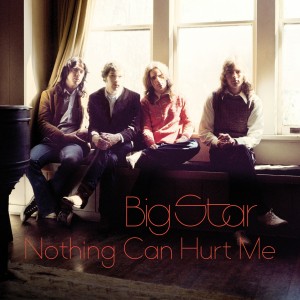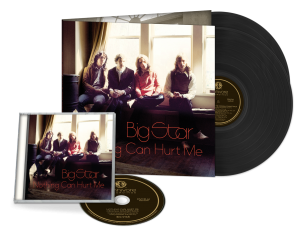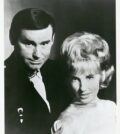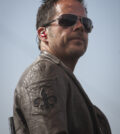- The Appalachian Spirit: 49 Winchester at Two Step Inn Festival 2024
- Wyatt Flores at Two Step Inn: Photos and Review
- Legendary Neal McCoy at Two Step Inn: Review and Photos
- Mark Chesnutt at Two Step Inn: Photos and Review
- Rising Star Sadie Bass Shines at the Faster Horses Festival
- Sawyer Brown at Faster Horses: A High-Octane Celebration of Four Decades
Documentary/Soundtrack Review – Big Star: Nothing Can Hurt Me
If you’ve never heard of 1970s American rock group Big Star, do not feel left out; hardly anyone else has either. They are the epitome of a “you probably haven’t heard of them” band. Unless, of course, you are an indie musician, rock journalist, or vinyl collector. Then you are definitely familiar with Big Star. In fact, it is more essential in hipster circles to know the legacy of this band than to actually know the music. The names Alex Chilton and Chris Bell are as mythological in audiophiles’ conversations as Gram Parsons and Lowell George. But the reality is that Big Star’s music lives up to, and even at times surpasses, the oppressive myth that shadows the band’s every move in rock history. Their mixture of Humble Pie-style grooves and Byrds’ folk/rock jangle is as potent and powerful on an iPod in 2013 as it was on a turntable in 1972.
To step away from the myth for a moment, they were a great ’70s band that simply didn’t make it. And in that way they were no different from the hundreds of other bands during that era for whom stardom was as an ever-elusive tease of free-flowing royalty advances and critical acclaim. Unlike all those other bands, however, three of Big Star’s studio albums eventually managed to make their way onto the Rolling Stone Top 500 albums list, and they’ve earned the adoration of such heavy hitters as REM, Beck, and Matthew Sweet. They’ve even had one of their songs (A Cheap Trick cover of “In the Street”) featured as the opening theme to the immensely successful ‘90s Fox sitcom That ’70s Show. With the long-awaited documentary Big Star: Nothing Can Hurt Me set for a July 3 theatrical release (Magnolia Pictures), the band is perhaps destined for the biggest exposure of its existence. It is an overdue, definitive narrative that tracks Big Star from their genesis in Memphis in 1971 to their dissolution in the late ‘70s amid bad deals, commercial failure, drugs, mental illness, and death – all the necessary ingredients in the mythological stew of rock and roll.
Peppered throughout the documentary are interviews with well-known rock musicians (all of whom cite Big Star as heavily influential), the surviving members of the band, family members, overzealous music critics, and an assorted cast of characters that have weaved in and out of the Big Star universe – from the heady days of anticipated success to the aftermath of obscurity. It also touches on the brief resurgence of the band in an abbreviated form during the early ‘90s. We do not see a lot of interview footage from the two masterminds of Big Star, Chilton and Bell. But we do get to see a lot of great photos and some hauntingly clear, early film footage of the band at Ardent Studios.
One of the biggest stars of the documentary is actually the soundtrack. Set for release on June 25 (Omnivore Recordings), it is a treasure trove of unreleased takes, demos, snippets, interludes, and studio banter that works just as well in album format as it does throughout the movie. On the soundtrack we get unissued versions of their most well known tunes, such as “In The Street,” “When My Baby’s Beside Me,” and “September Gurls” as well as a host of other material that will be familiar to Big Star fans, yet in unique form. The tracks are crisp and lively, making it sound like it was recorded yesterday. For a band with such a murky legacy, their music is as fresh and clear as when it was first put to tape over 40 years ago.
The greatest asset of this documentary/soundtrack release is that it’s the perfect portal by which to enter the realm of Big Star. This band has spent too much time in the shadows of its cult following. After all, they’re not your typical “cult” band. Their songs are catchy, fun, melodic, and skillfully arranged. They recorded at the now-legendary Ardent Studios in Memphis, which was state-of-the-art at the time. They had a record deal, a producer, a manager, and a publicist. But as you watch the film, you see how events can combine to shape destiny in unpredictable and sometimes cruel ways – no matter how the stars seem to be aligned in the beginning.
Watching the documentary, you will be introduced to the brutal, fickle world of the music business. You will learn that great talent doesn’t always lead to great success. As you listen to the soundtrack, you will be surprised at the familiarity of Big Star’s music. That, of course, is because they’ve been pillaged and plagiarized for four decades by some of the biggest stars that presently grace your music collection. This documentary might just be what it takes to put the band in its rightful place as one of the most influential groups in rock history. We can only hope that the Big Star curse of elusive fame has finally been lifted, allowing the eyes and ears of the greater public to be exposed to this great lost band.
(Trailer for Big Star: Nothing Can Hurt Me):
[youtube id=”gxAbkqRGxqY” width=”620″ height=”360″]















2 Comments